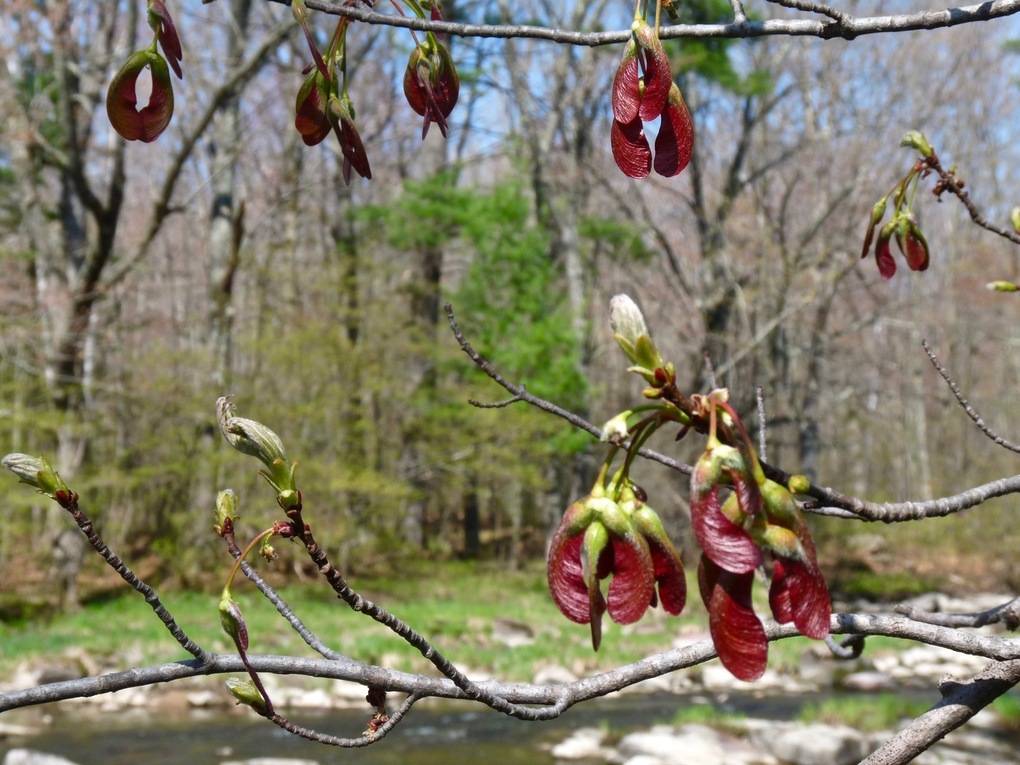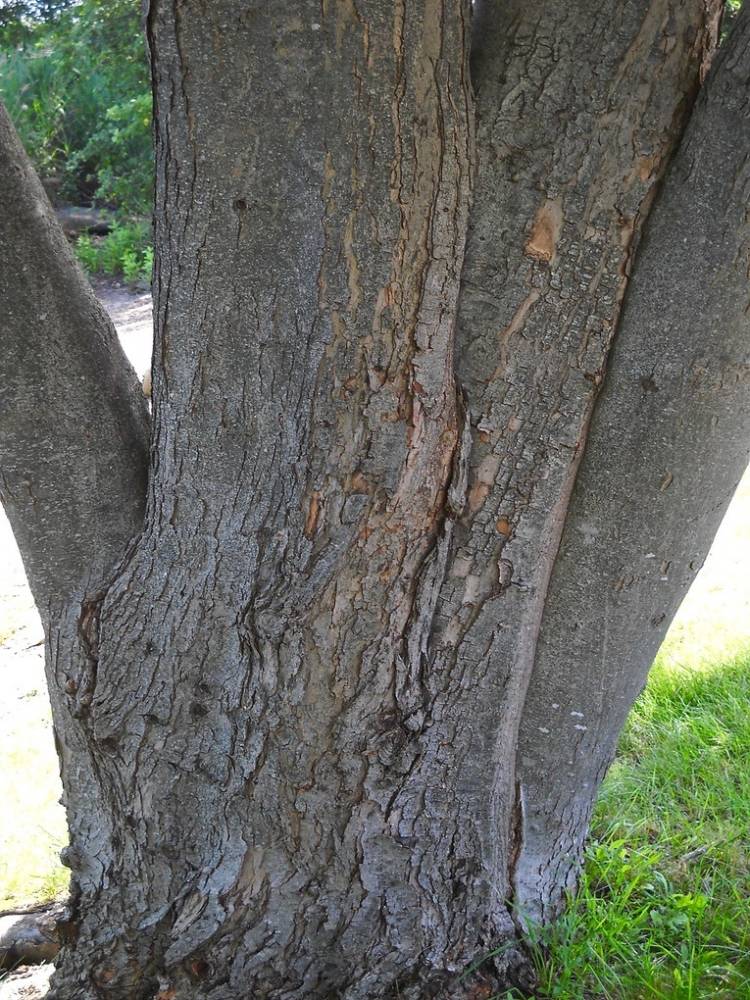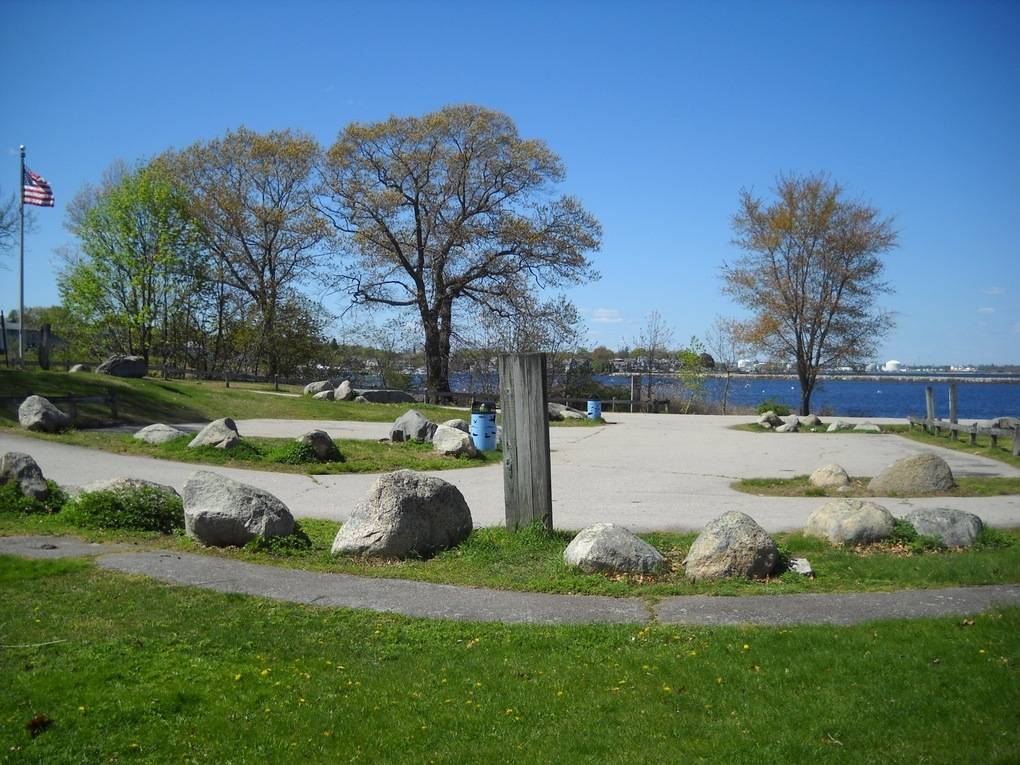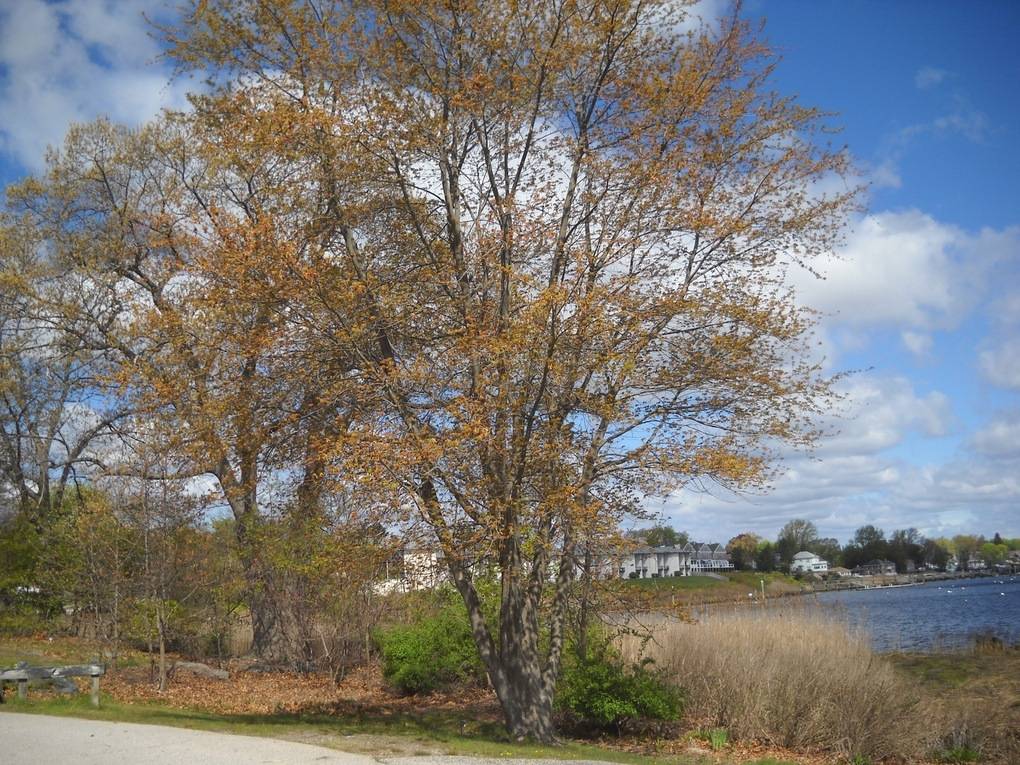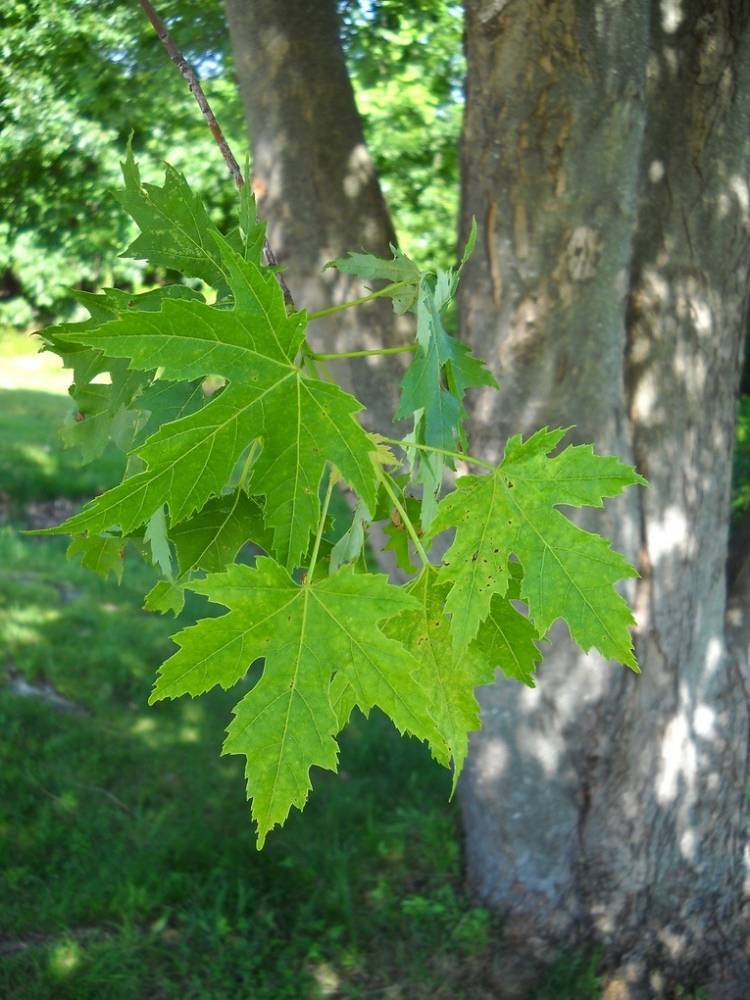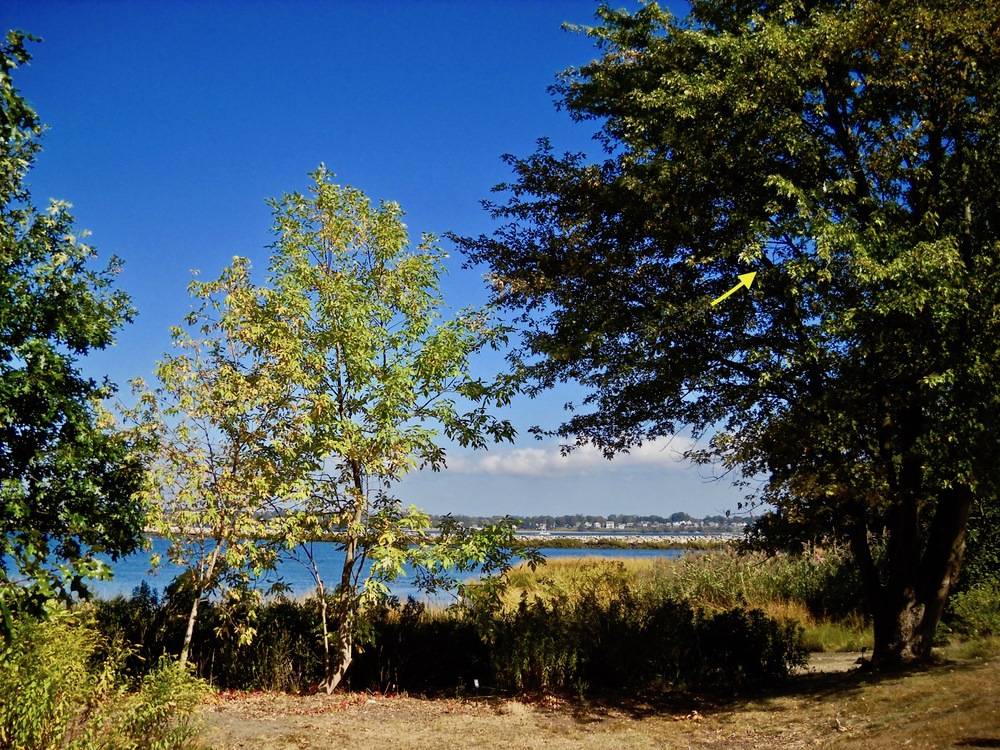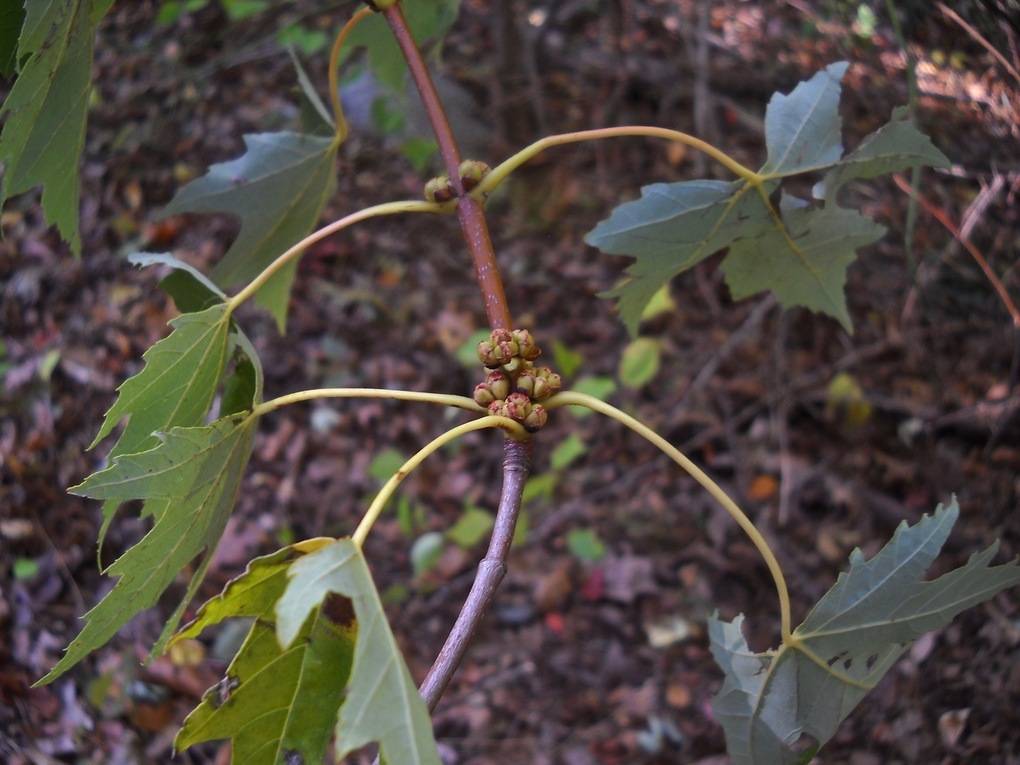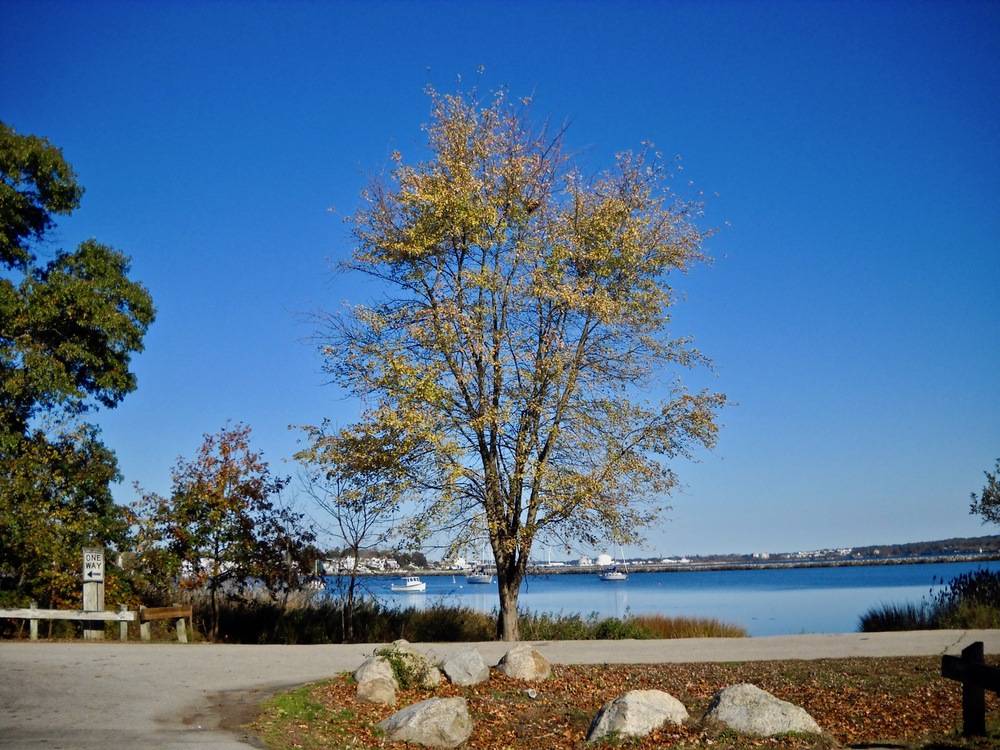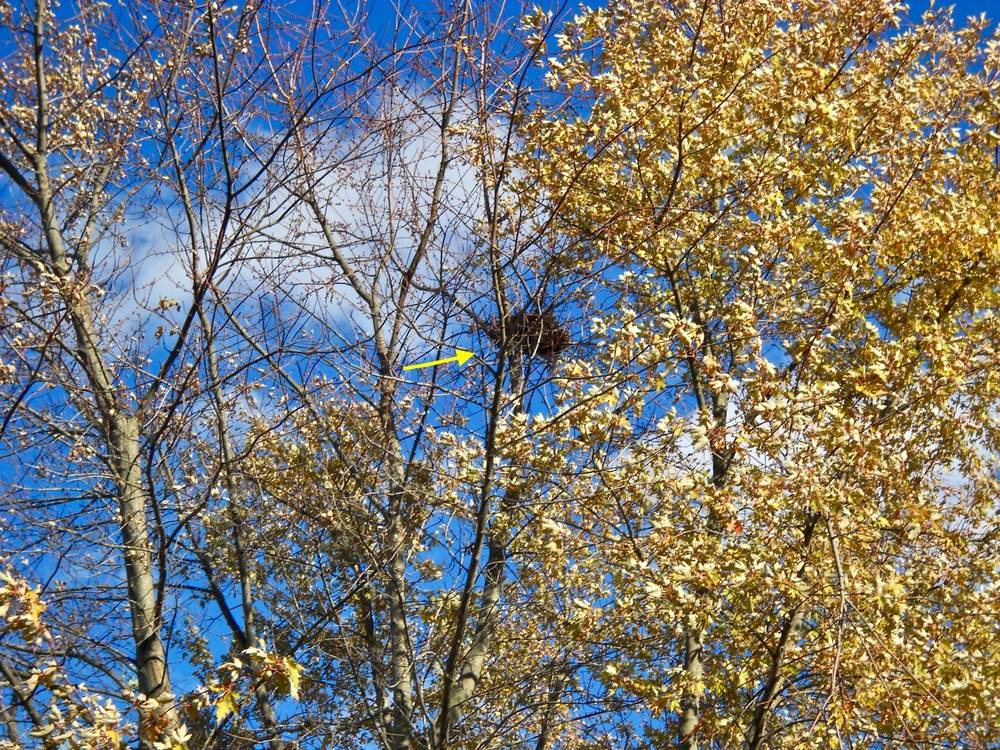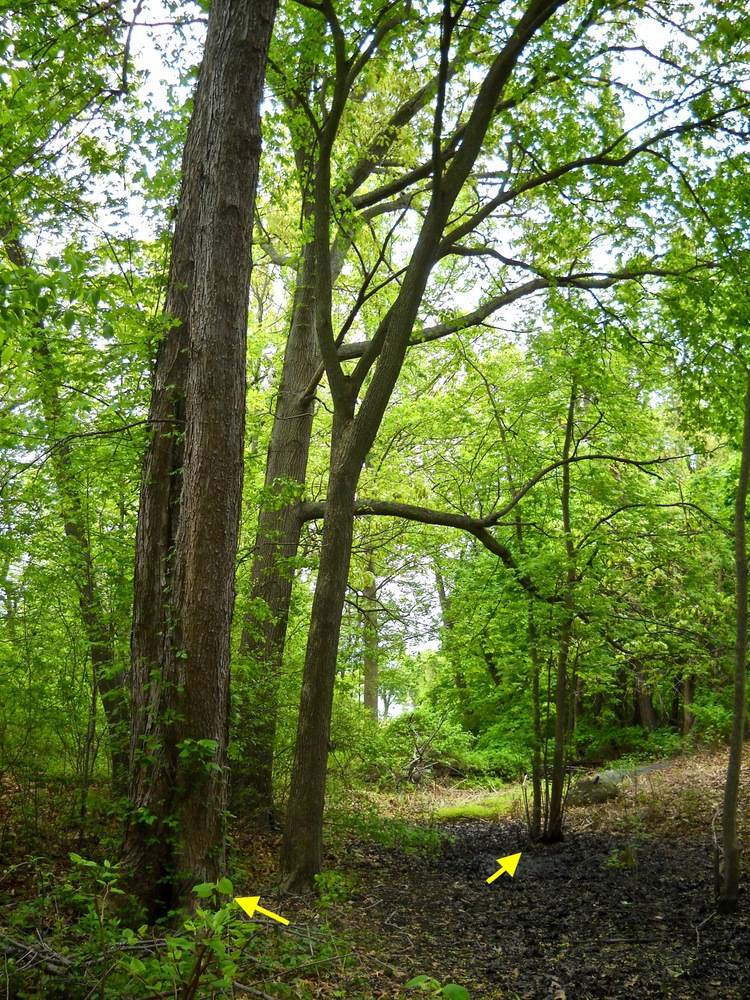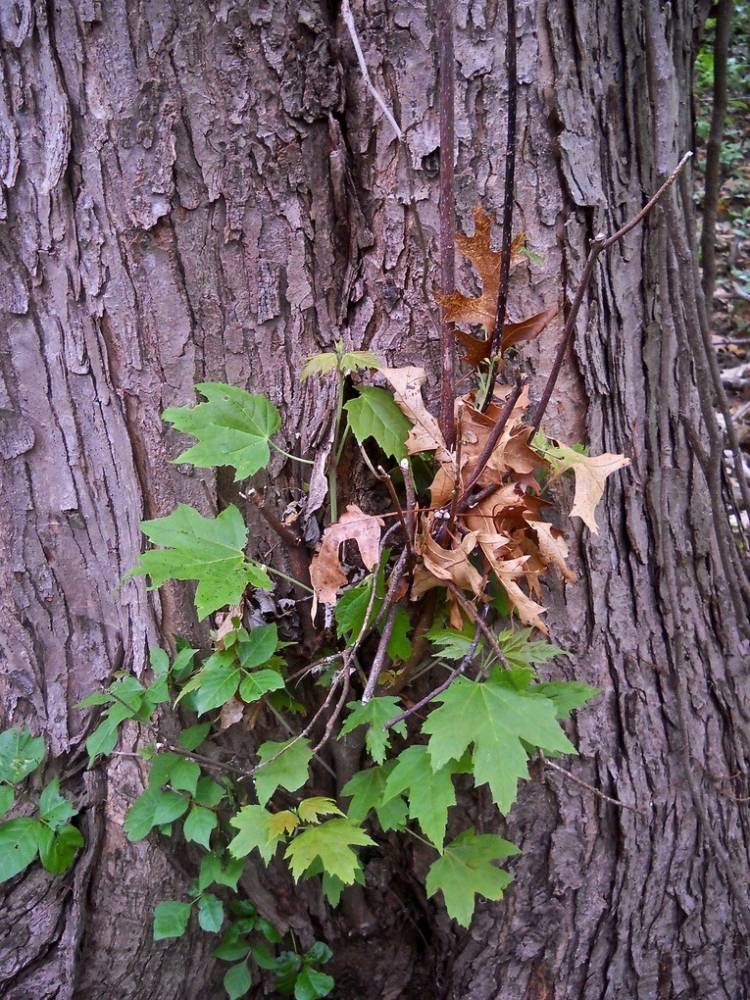silver maple
The silver maple is native to eastern and central United States as well as southeastern Canada. It is one of the most common trees in North American and naturally occurs near bodies of water, as suggested by its other common names, creek maple, swamp maple and water maple. The name silver maple refers to the downy white underside of its leaves, made visible by passing gusts of wind.
All the silver maples at Salter Grove grow near water in relatively moist soil. An adult with a short and stout main trunk grows in open sunlight near the boat launch at trail marker U10. It has a rather different form than the taller adult and two saplings growing in shaded woodland near the beginning of Pond Trail. There is a truncated individual at the foot of Audubon Field south of where Audubon Trail bends east to connect with the Marsh Trail.
The silver maple leaf provides a classic example of a palmate leaf, with five clear lobes like the fingers of a hand, radiating outwards from the leaf stalk. Its plump samaras are heavier than those of other native maples and are probably dispersed more often by water than by wind. As in other maple species, silver maple saplings tend to have smooth bark compared with the more textured bark of adult plants. Cavities often form in older trunks and become shelters for birds and squirrels.
A rapid growth rate led to its popularity as a street tree at a time when the American Elm was on a rapid decline. However, it lost favor when its other characteristics became apparent. Its brittle wood resulted in many broken branches during storms. Its shallow root system broke up sidewalks or house foundations as well as penetrated septic fields and drain pipes. Frequent pruning was necessary to maintain a tree-like form and numerous seedlings had to be removed because large crops of samaras were produced annually.
Native Americans used infusions of the inner and outer barks to alleviate "female trouble" or cramps in general, to wash sore eyes, and to treat skin conditions. Although the sap has a lower sugar content than the sugar maple, it was boiled down to make a sweetener, or was fermented into an intoxicating beverage. The wood was used to make baskets, furniture, or ceremonial carvings. Silver maple wood is considered soft compared to that of other maple species.
For more information:
https://gobotany.nativeplanttrust.org/species/acer/saccharinum/
http://www.florafinder.com/Species/Acer_saccharinum.php
http://dendro.cnre.vt.edu/dendrology/syllabus/factsheet.cfm?ID=5
https://en.wikipedia.org/wiki/Acer_saccharinum
https://dengarden.com/landscaping/Silver-Maple-The-Nuisance-Tree

